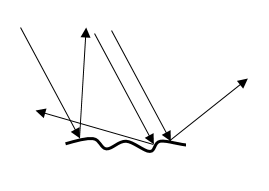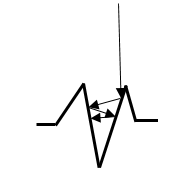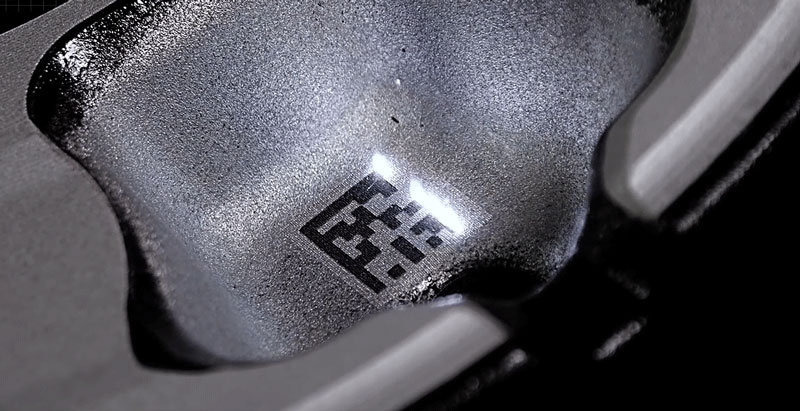
Because of its speed and durability, laser etching is the process that we recommend for most marking applications.
Over the years, we’ve been asked all kinds of questions about it. Whether you want to know how it works, how it’s different than other laser marking processes or how much it costs, we’re confident that you will find everything you need to know in this article.
- What Is Laser Etching?
- When Was Laser Etching Invented?
- How Does Laser Etching Work?
- What’s the Difference Between Laser Etching and Laser Engraving?
- Is Laser Etching Permanent?
- What Materials Can Be Etched With a Laser?
- What Colors Can Be Etched With a Laser?
- How Fast Is Laser Etching?
- What Types of Lasers Can Do Laser Etching?
- How Much Does a Laser Etching Machine Cost?
- What Makes Some Lasers More Expensive?
- How Do You Implement Laser Etching?
What Is Laser Etching?
Laser etching is a process that creates marks on parts and products by melting their surface. It is part of the broader category called laser marking which also includes laser engraving and laser annealing. Highly versatile, it can be used with most metals.
To produce a raised mark, the laser beam delivers a high amount of energy to a small area. As a result, the surface of the material melts and expands. This can color the material in black, white or gray.
Etching is most commonly used to produce permanent markings such as data matrix codes, serial numbers, barcodes and logos.
When Was Laser Etching Invented?
The date laser etching was invented is unknown but we know that laser engraving was reported to be used for the first time in 1978. Since the two processes are very similar (laser engraving involves some level of melting), the origin of laser etching is arguably the same as laser engraving.
Here are some of the key events that led to the invention of laser etching as we know it today:
- 1917 – Albert Einstein theorizes that electrons can be made to emit light of a specific wavelength in his paper “On the Quantum Theory of Radiation”.
- 1951 – Charles Hard Townes conceives the maser (microwave amplification by stimulated emission of radiation), the predecessor of the laser (light amplification by stimulated emission of radiation). In 1954, he demonstrates that the maser works with a device that emits a wavelength of ≈1 cm.
- 1957 – Gordon Gould theorizes the laser. Almost at the same time in 1958, Townes publishes a paper that shows that masers could operate in the optical and infrared spectrum. This leads to long patent disputes, with Gould only receiving patents in 1977 and 1979. In 1988, he receives royalties for the first time after 30 years of disputes.
- 1960 – The first laser is constructed. It uses a synthetic ruby crystal (its gain medium) to amplify light.
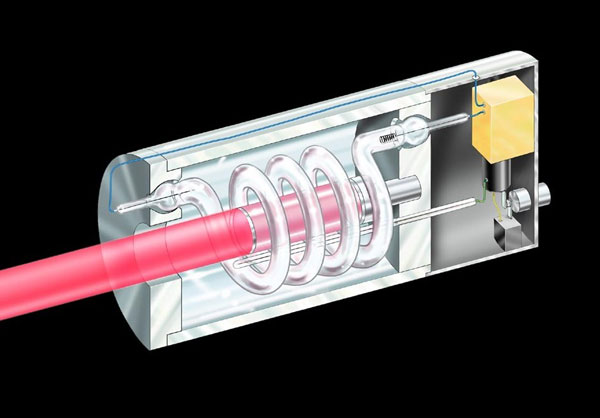
- 1960 – The first continuous laser beam is generated. This technique is used today for applications like laser welding and laser cutting.
- 1962 – Q-switching, a technique for producing pulsed laser beams, is invented. Pulsed beams reach higher peak powers than continuous beams and are used today for laser etching, laser engraving as well as many other industrial applications.
- 1964 – The Nd:YAG laser is invented. In today’s manufacturing, variants of this laser are used for laser etching, laser cutting and laser welding.
- 1964 – The CO2 laser is invented. Today, it is used for applications like laser marking and laser cutting.
- 1978 – The first laser engraver, although in its primitive form, is purchased. It is used to create works of art on wood.
- 1996 – The first software designed specifically for lasers is created. Computers are eventually directly integrated into laser engraving machines.
From that point on, laser etching and laser engraving began being used more widely to engrave personal items and to implement modern traceability in production lines.
How Does Laser Etching Work?
All laser marking methods have one thing in common: the laser beam is pulsed, releasing sudden bursts of energy at specific intervals. Within 1 second, a 100W pulsed laser can release 100,000 pulses. Each pulse contains 1 millijoule of energy and can reach 10,000W of peak power.
Since laser etching a metal requires less energy per area than engraving it, pulses are more distant from one another, as shown below.
| Laser Etching Process | Laser Engraving Process |
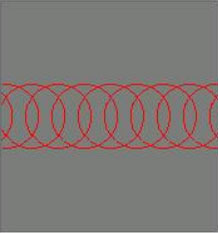 |
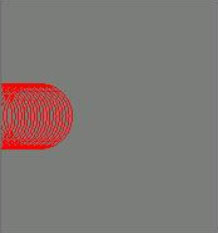 |
When the beam hits the surface, the material absorbs its energy, converting it into heat. While the material surface reflects most of the beam’s energy, it also absorbs and converts part of that energy into heat. For laser etching to occur, the material must absorb just enough energy to melt its micro surface and make it expand.
When the beam’s energy is transformed into heat, the temperature of the material increases. At such a high heat, the surface becomes malleable, allowing its shape to change.
| Material | Melting Point |
|---|---|
| Aluminum 6061 | 585°C |
| Aluminum 380 | 566°C |
| Carbon Steel | 1425—1540°C |
| Lead | 327.5°C |
| Magnesium | 650°C |
| Stainless Steel Grade 304 | 1400—1450°C |
| Stainless Steel Grade 316 | 1375—1400°C |
As the material melts and cools down within milliseconds, localized changes occur on the surface. Surface roughness changes, creating permanent markings.
What do changes in roughness look like? Let’s look at magnified images taken using an electron microscope.
| Before the Laser Etching Process | After the Laser Etching Process |
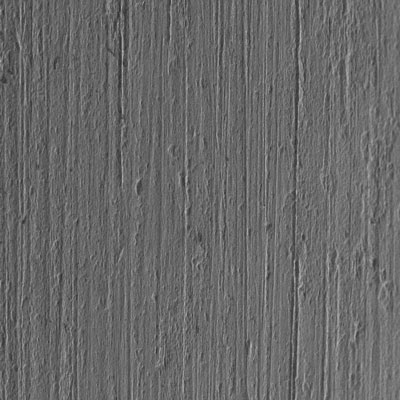 |
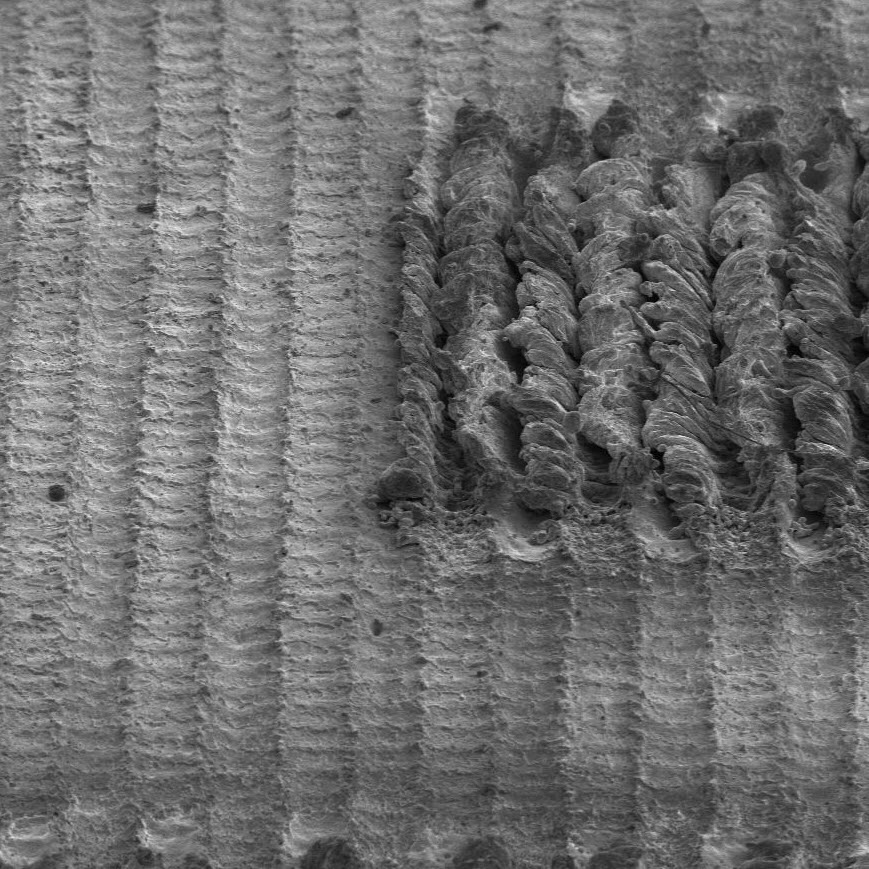 |
As you can see, surface roughness is permanently affected. Color changes appear as a result of different patterns on the surface. For high-quality markings, the black and white colors offer the best contrasts.
Of course, the process is optimized for each application and thus slightly different. If you have specific requirements, the best way to find out how the etching process works for your application is to ask a laser expert.
If you want to further explore the physics behind laser technology, you can also watch free educational videos produced by the MIT.
What’s the Difference Between Laser Etching and Laser Engraving?
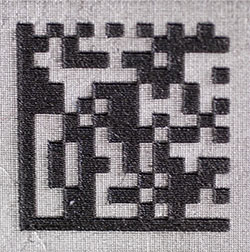 |
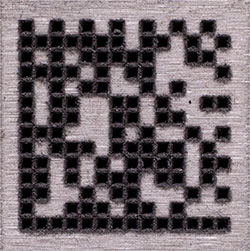 |
| Laser Etching | Laser Engraving |
Laser etching is faster, but laser engraving is more durable. This is because reaching a material’s melting point (laser etching) requires less energy than vaporizing it (laser engraving). Deep laser engraving may even require several laser passes and inevitably even more time.
On the other hand, the holes dug with engraving have a better protection against abrasion than the elevated marks formed with etching. In fact, the laser etching elevation can reach up to 80 microns whereas the laser engraving depth can reach 500 microns.
Laser etching stands out when it comes to creating high-contrast markings. Whereas laser engraving only creates black marks, laser etching can be used to create both black and white marks. For this reason, laser engraving is usually used in combination with laser etching to create high-contrast engravings.
Etching is generally better than engraving unless you need high resistance to abrasion. If you still can’t decide which is best for you, we’ve prepared an article to help you choose between etching and engraving and another one to learn more about the different laser marking processes. Or you can ask a laser expert.
Watch this video to see both laser engraving (dark markings) and laser etching (pale markings).
Is Laser Etching Permanent?
Yes, laser etching is permanent. A laser etched mark will remain readable for the part’s useful life with better readability than other direct part marking technologies. In fact, laser etching can withstand non-abrasive treatments including e-coating, powder coating and heat treating.
But know that laser etching has its limitations. Abrasive treatments such as shotblasting and sandblasting typically remove laser etched marks. To maintain readability after abrasive treatments, you need to mark workpieces with shotblast resistant laser engraving.
What Materials Can Be Etched With a Laser?
Laser etching is a versatile process that can be used with almost any metal. The following list is non-exhaustive:
For information on marking different materials, contact a laser expert.
What Colors Can Be Etched With a Laser?
Laser etching can generate black, white and shades of gray. For high-quality markings and part traceability, black and white offers the best contrast. Here’s how laser etching creates those colors:
| Diffuse reflections create white | Absorption creates black |
|
Where the surface roughness causes light rays to be reflected at different angles (i.e., diffuse reflections), the surface appears white. |
Where the surface roughness causes light rays to be trapped (i.e., absorbed), the surface appears black. |
Laser annealing, a different marking process, can create a wider range of colors on steel and stainless steel. By modulating the laser parameters, different colors can be created, as shown in the following pictures.
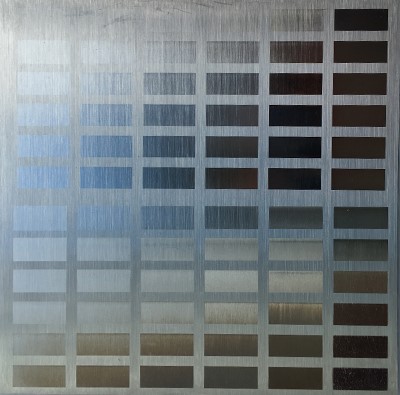 |
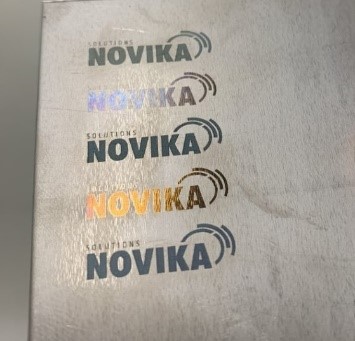 |
How Fast Is Laser Etching?
Laser etching is more than twice as fast as engraving and annealing, making it the fastest laser marking process. To increase the etching speed, you can use systems with higher laser powers. For most marking applications, the maximum laser power you will need is 100W. Higher power lasers are also available if needed.
A system of equal power can etch faster than another if it is built with better optical components and has optimized laser parameters. Our LXQ Series is a typical example of this. Speed tests have proven that it is the fastest laser marker for metals.
Other than that, the marking speed also depends on the type of material, the size of the identifier and its colors (etching white marks is faster than black marks). The following resources provide you with examples of marking speed:
What Types of Lasers Can Do Laser Etching?
Only fiber lasers can be used for laser etching. This is because etching is a process used with metals, which react better to fiber lasers. In fact, the laser you need depends on the type of material you want to etch, not on your marking process.
But why exactly do you need fiber lasers to etch metals? Bear with us, the answer is technical.
Lasers release energy by emitting laser beams of specific wavelengths. When the beam hits the surface, the material reflects most of its energy. The remaining energy is absorbed and converted into heat. For laser etching, the material must absorb just enough energy to melt.
Now, fiber and CO2 lasers generate different wavelengths, and each material absorbs/reflects these wavelengths differently. To maximize the energy transfer from the laser beam to the material, you need the right wavelength.
As you can see in the following graph, metals absorb the fiber laser’s wavelength (1064 nm) more efficiently than the CO2 laser’s (10.6 µm). For this reason, the fiber laser (a type of solid-state laser) is a better choice when marking metals.
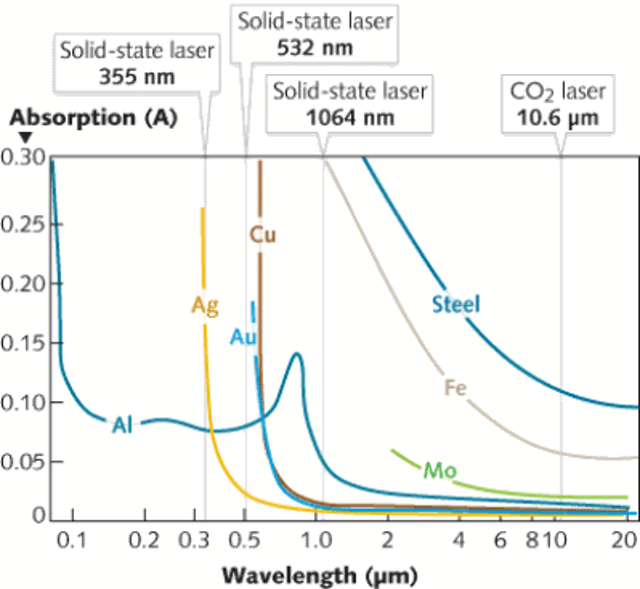
Original work published in Laser Focus World reprinted courtesy of Endeavor Business Media, LLC.
How Much Does a Laser Etching Machine Cost?
It’s hard to put a price that covers all solutions for laser etching, especially because the price varies a lot from one company to another. But we can give you an idea of the costs involved.
The laser system itself is not that expensive, with higher prices for manufacturing applications and lower prices for less serious applications. The price you pay also depends on the level of automation you need.
- Tabletop lasers, or desktop lasers, are the least expensive solutions. They are meant for local stores who want to engrave personal items such as jewelry, trophies and guns. Because marking isn’t performed in an enclosure, wearing laser safety goggles is required.
- Manual workstations are more expensive than tabletop lasers because they include a Class-1 laser enclosure that keeps the operator 100% safe. This type of laser is ideal for batch marking.
- Semi-automated workstations feature a rotary table that supports the operator, allowing the marking operation to be performed in hidden time. This type of workstation is used for inline laser marking (the operator must follow the production flow). It is also used for batch marking.
- Fully automated laser machines are the most expensive solutions. They are meant to be integrated in high-volume production lines that use robots or conveyor systems, such as the ones found in smelting plants, casting plants, and assembly lines.
What Makes Some Lasers More Expensive?
The examples that follow will help you understand the price gaps between lasers from different companies.
- Some laser machines offer no environmental protection while others have IP ratings, offering protection against dust, water and other contaminants that could break your system over time.
- Some laser systems are made of cheap optical components that generate low-quality markings. Other lasers use higher quality components that improve durability, speed, contrast and precision.
- Some lasers are enclosed in plastic casings that can easily break. Others are enclosed in sturdy metallic frames that withstand direct shocks and protect the internal components.
Before buying a laser, you should:
- Discuss your application with a laser expert who can advise you.
- Ask how the product is different than the competition’s.
- Request a sample marking.
How Do You Implement Laser Etching?
To implement laser etching inside and outside production lines, Laserax offers laser marking machines (for standard solutions) and OEM laser markers (for custom solutions with system integrators).
We know that each project has specific requirements. If you have questions on how laser etching is implemented, we can help you. All you need to do is ask our experts.
